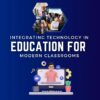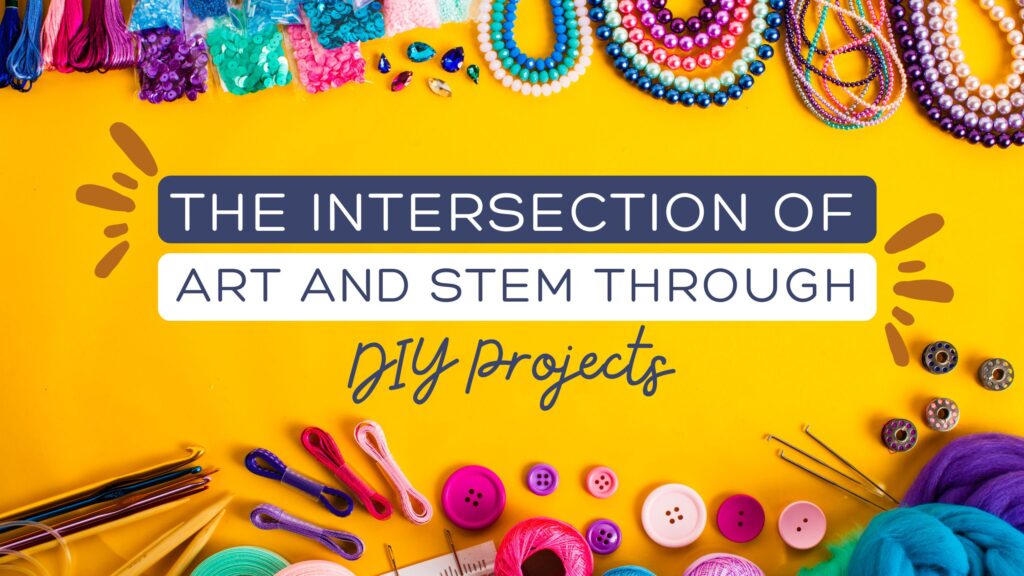Author: Jacqui
I’m traveling Feb. 16-22
I’m off to visit my two military children and then help my son move before deploying overseas. As a result, I won’t be around much–a bit, but forgive me if I seem to be ignoring everyone!
See you-all in a few weeks!
–Comments are closed because I will be completely unreliable!
Share this:
- Click to share on Facebook (Opens in new window) Facebook
- Click to share on X (Opens in new window) X
- Click to share on LinkedIn (Opens in new window) LinkedIn
- Click to share on Pinterest (Opens in new window) Pinterest
- Click to share on Telegram (Opens in new window) Telegram
- Click to email a link to a friend (Opens in new window) Email
- More
Engineers Week Feb. 16-22 2025
This week, February 16-22, 2025 is DiscoverE’s Engineers Week. Their tagline:
“A week-long event, a year-long commitment”
Do you wonder why anyone would be passionate about engineering? Overall, engineering offers a combination of intellectual challenge, real-world impact, and opportunities for personal and professional growth. By pursuing a career in engineering, students can contribute to meaningful projects, solve complex problems, and make a positive difference in the world.
What is Engineers Week?
Engineers Week, also known as EWeek, is an annual event celebrated in the United States typically during the third or fourth week of February, this week: February 18-24, 2024 dedicated to promoting awareness and appreciation of engineering.
During Engineers Week, engineering societies, universities, companies, and other organizations organize workshops, competitions, seminars, outreach programs to schools, career fairs, and networking events. The goal is to inspire the next generation of engineers, showcase the importance of engineering in solving global challenges, and recognize the achievements of engineers and encourage young people to pursue careers in STEM (science, technology, engineering, and mathematics).
Share this:
- Click to share on Facebook (Opens in new window) Facebook
- Click to share on X (Opens in new window) X
- Click to share on LinkedIn (Opens in new window) LinkedIn
- Click to share on Pinterest (Opens in new window) Pinterest
- Click to share on Telegram (Opens in new window) Telegram
- Click to email a link to a friend (Opens in new window) Email
- More
How to Make Learning Math More Interactive and Engaging
With the disturbing news about plummeting math scores here in the US, it’s good to review math teaching in your classroom and consider better ways to deliver lessons to students. The Ask a Tech Teacher team has ideas for you:
How to Make Learning Math More Interactive and Engaging
Math has a reputation—either you love it or avoid it like a pop quiz you forgot to study for. For many students, the struggle isn’t about intelligence but how math is taught. Endless drills, repetitive problem sets, and old-school memorization techniques can make even the most curious minds switch off.
But here is the thing: math does not have to be boring. It’s hidden in video games, sports stats, music beats, and even how your favorite social media app recommends content. The problem is that most teaching methods do not expose these fascinating aspects of mathematics.
Thankfully, technology, video games, and interactive hobbies may alter the story in the modern day. Here are some strategies to make arithmetic interesting and remembered, whether you’re a teacher, parent, or just a kid looking to transform math from a chore into something fun. (more…)
Share this:
- Click to share on Facebook (Opens in new window) Facebook
- Click to share on X (Opens in new window) X
- Click to share on LinkedIn (Opens in new window) LinkedIn
- Click to share on Pinterest (Opens in new window) Pinterest
- Click to share on Telegram (Opens in new window) Telegram
- Click to email a link to a friend (Opens in new window) Email
- More
Integrating Technology in Education for Modern Classrooms
Integrating Technology in Education for Modern Classrooms
Embracing technology is crucial for modern educators aiming to enhance their teaching methodologies and foster student engagement. In today’s classrooms, technology serves not just as a tool but as an essential part of the learning environment. Understanding its role and potential can transform traditional teaching into an interactive and efficient experience.
The integration of technology into education is not merely a trend but a necessity in our rapidly advancing world. As an educator, leveraging technological tools can significantly enrich your teaching methods and student interactions. Various platforms such as Canvas, AI-driven applications, and PowerPoint have become staples in classrooms, facilitating diverse and dynamic learning experiences. By understanding and utilizing these resources, you can create a more engaging educational environment that caters to various learning styles. An online electrical and computer engineering degree can equip educators with the necessary skills to effectively implement these technologies in their teaching practices. (more…)
Share this:
- Click to share on Facebook (Opens in new window) Facebook
- Click to share on X (Opens in new window) X
- Click to share on LinkedIn (Opens in new window) LinkedIn
- Click to share on Pinterest (Opens in new window) Pinterest
- Click to share on Telegram (Opens in new window) Telegram
- Click to email a link to a friend (Opens in new window) Email
- More
Random Acts of Kindness Day is Coming. How Will You Celebrate?
A friend of mine told me this story:
“On a chilly winter evening in New York City, Sarah (not her real name) was struggling with the cold and the cost of her subway ride home when an elderly man noticed her plight. Without hesitation, he gave her a fully loaded subway card, explaining he had more than he needed. He also offered her a homemade sandwich, insisting it was no good to waste food. This unexpected kindness brought tears to Sarah’s eyes, warming her not just with the promise of a meal and a ride home, but with the profound reminder of human compassion in an often indifferent world.”
That was one of many Random Acts of Kindness experienced in a world known for just the opposite. Now, February 9-15, 2025 in America is Random Acts of Kindness Week and is when everyone encourages acts of kindness without any expectation of consideration in return.
“Kindness is a language which the deaf can hear and the blind can see.” — Mark Twain
What is Random Acts of Kindness Day?
Random Acts of Kindness (RAK) Day is twenty-four hours when anyone who chooses to participate agrees to perform unexpected acts of kindness to pay it forward for that time they need a little bit of unexpected care. We flaunt our altruistic side by doing something nice for another without a thought for the consequences.
Why is Kindness important?
Why kindness is important seems obvious, but really, it isn’t. I can name a whole lot of people who have succeeded despite being, well, jerks so why should we think there’s merit in a gentler approach?
Share this:
- Click to share on Facebook (Opens in new window) Facebook
- Click to share on X (Opens in new window) X
- Click to share on LinkedIn (Opens in new window) LinkedIn
- Click to share on Pinterest (Opens in new window) Pinterest
- Click to share on Telegram (Opens in new window) Telegram
- Click to email a link to a friend (Opens in new window) Email
- More
13 Online Resources About Kids News Resources
News sources for kids (click for updates to this list):
- C News for kids
- Kids News – Current Events
- KidsPost https://www.washingtonpost.com/lifestyle/kidspost/
- KiwiKids News https://kiwikidsnews.co.nz/ excellent articles on world events as well as general interest topics.
- News For Kids https://newsforkids.net
- News-o-matic for kids (app)
- Newsela https://newsela.com each article written at five different reading levels
- NewseumEd
- Reach Out Reporter — science news for elementary students
- Science News for Students https://www.sciencenewsforstudents.org
- Student Daily News https://www.studentnewsdaily.com/
- Teaching Kids News http://teachingkidsnews.com/
- TweenTribune http://tweentribune.com written at four different reading levels so the content can be used K-12.
–image credit Deposit Photo (more…)
Share this:
- Click to share on Facebook (Opens in new window) Facebook
- Click to share on X (Opens in new window) X
- Click to share on LinkedIn (Opens in new window) LinkedIn
- Click to share on Pinterest (Opens in new window) Pinterest
- Click to share on Telegram (Opens in new window) Telegram
- Click to email a link to a friend (Opens in new window) Email
- More
The Stories Clothes Tell: Capturing a Toddler’s Growth Through Outfits
Toddlers grow up fast. Their clothing tells a story of those years if only we could capture them. Well, we can, with lots of digital tools–pictures, videos, IG stories, FB calls with family. We’ll get into those in a later article. For this one, the Ask a Tech Teacher team is addressing what those stories are…
The Stories Clothes Tell: Capturing a Toddler’s Growth Through Outfits
Each tiny outfit carries memories of milestones and the fleeting days of childhood for parents. From the first pair of onesies to the favorite superhero t-shirt, every piece of clothing tells a story about a toddler’s growth, personality, and experiences.
Toddlers outgrow their clothes quickly, which makes each garment a marker of a specific moment. As parents curate wardrobes for their little ones, they can also preserve memories. Some parents even keep a few cherished pieces as keepsakes. Visiting a trusted toddler clothing website is a great way to find unique, high-quality outfits that can become part of these memories.
Why Clothes Hold Emotional Value for Parents
Toddler clothes often evoke strong emotions. That polka-dot dress may remind you of your child’s first steps, while a tiny pair of overalls might bring back memories of their playful adventures in the backyard. Parents tend to attach meaning to these items because they symbolize their child’s growth and development.
Clothes also reflect a child’s personality and interests at different stages. One week, a toddler might insist on wearing a bright yellow raincoat everywhere, even on sunny days. Another time, they might refuse to wear anything other than their dinosaur pajamas. These preferences show how toddlers begin to express their individuality.
Outfits as Markers of Milestones
Clothes have a unique way of marking key moments in a toddler’s life. No matter if it’s a special occasion, a holiday, or just an ordinary day turned memorable, the outfits worn during these moments become part of the story. Here are some common milestones and their accompanying outfits:
| Milestone | Outfit Example | Memories Created |
| First steps | Soft-soled shoes or stretchy overalls | Capturing their first wobbly movements |
| Birthday celebrations | Party dresses or themed T-shirts | The joy of candles, balloons, and giggles |
| First day at preschool | Comfy pants and a backpack | A big step into the world of learning |
| Seasonal holidays | Festive pajamas or matching family outfits | Traditions filled with warmth and cheer |
| Playtime outdoors | Sturdy sneakers and casual T-shirts | Adventures in sandboxes and grassy fields |
How to Document Growth Through Clothes
1. Create a Photo Journal
Take pictures of your toddler in their favorite outfits during special moments. Over time, these photos will form a visual timeline of their growth. Organize the pictures by date or milestone to create a meaningful keepsake that’s easy to revisit.
2. Save a Few Special Pieces
Choose a handful of garments that hold the most sentimental value and store them in a memory box. Label each piece with a note about the occasion or moment it represents.
3. Make a Quilt or Pillow
Transform outgrown clothes into a patchwork quilt or cushion. It’s a unique way to preserve the memories tied to each piece. This functional keepsake can also become a comforting reminder of your toddler’s early years.
4. Write Stories
Pair pictures of outfits with short descriptions of the moments they represent. Include details like what your child loved about the clothes or why they were significant. These written memories will enrich the visual story and provide a deeper connection to those moments.
5. Display in a Shadow Box
Frame a particularly special outfit alongside photos and mementos from the same period. Small items like shoes or favorite toys can make the display even more meaningful.
The Evolution of Personal Style
Toddlers’ sense of style can be as simple as choosing bright colors, picking clothes with favorite characters, or insisting on mismatched socks. While these choices may seem whimsical, they are an early form of self-expression.
Parents can encourage this creativity by providing options that align with their child’s preferences while ensuring practicality. For example, if your child loves glittery clothes, look for options that are comfortable and durable. Letting toddlers select their outfits helps them feel confident and valued.
How Clothes Connects to Memories
Clothes often become intertwined with memories, and they create a tangible connection to the past. That cozy jacket worn on family hikes or the pajamas your toddler wore during bedtime stories can instantly transport you back to those moments. Over time, these items serve as a bridge to cherished times and remind you of how far your child has come.
Looking back at old outfits can also be a fun activity as your toddler grows. They may enjoy hearing the stories behind the clothes and learning about the adventures they had while wearing them. This reflection helps them develop an appreciation for their journey.
In a Nutshell
The clothes toddlers wear tell rich, colorful stories about their early years. Each outfit holds memories of milestones, celebrations, and everyday adventures. Documenting these moments creatively will help parents capture the essence of their child’s growth and personality. From baby shoes to favorite t-shirts, every garment becomes part of a narrative that will bring joy for years.
Here’s the sign-up link if the image above doesn’t work:
https://forms.aweber.com/form/07/1910174607.htm
“The content presented in this blog are the result of creative imagination and not intended for use, reproduction, or incorporation into any artificial intelligence training or machine learning systems without prior written consent from the author.”
Jacqui Murray has been teaching K-18 technology for 30 years. She is the editor/author of over a hundred tech ed resources including a K-12 technology curriculum, K-8 keyboard curriculum, K-8 Digital Citizenship curriculum. She is an adjunct professor in tech ed, Master Teacher, freelance journalist on tech ed topics, and author of the tech thrillers, To Hunt a Sub and Twenty-four Days. You can find her resources at Structured Learning.
Share this:
- Click to share on Facebook (Opens in new window) Facebook
- Click to share on X (Opens in new window) X
- Click to share on LinkedIn (Opens in new window) LinkedIn
- Click to share on Pinterest (Opens in new window) Pinterest
- Click to share on Telegram (Opens in new window) Telegram
- Click to email a link to a friend (Opens in new window) Email
- More
#WorldReadAloudDay February 5th
World Read Aloud Day celebrates the pure joy of oral reading with kids of all ages. Created by LitWorld, past years have found over 1 million people in 100 countries joining together to enjoy the power and wonder of reading aloud in groups or individually, at school or home, and discovering what it means to listen to a story told through the voice of another. For many, this is a rare opportunity to hear the passion of a well-told story and fall in love with tales where hearing them reaches listeners on a level nothing else can. Think back to your experiences. You probably sat with an adult, in their lap or curled up in bed. The way they mimicked the voices in the story, built drama, and enthused with you over the story and characters made you want to read more stories like that on your own. This is a favorite activity not just for pre-readers, but beginning and accomplished readers because it’s not about reading the book; it’s about experiencing it through the eyes of a storyteller.
Somehow, as lives for both the adults and children have gotten busier, as digital devices have taken over, as parents turned to TVs or iPads to babysit kids while they do something else, we’ve gotten away from this most companionable of activities. World Read Aloud Day is an opportunity to get back to it.
Importance of reading aloud
There is no more powerful way to develop a love of reading than being read to. Hearing pronunciations, decoding words in context, experiencing the development and completion of a well-plotted story as though you were there are reason enough to read aloud but there’s more. Reading in general and reading aloud specifically is positively correlated to literacy and success in school. It builds foundational learning skills, introduces and reinforces vocabulary, and provides a joyful activity that’s mostly free, cooperative, and often collaborative. Did you know reading aloud:
Share this:
- Click to share on Facebook (Opens in new window) Facebook
- Click to share on X (Opens in new window) X
- Click to share on LinkedIn (Opens in new window) LinkedIn
- Click to share on Pinterest (Opens in new window) Pinterest
- Click to share on Telegram (Opens in new window) Telegram
- Click to email a link to a friend (Opens in new window) Email
- More
Language: The Biggest Communication Barrier for Foreign Students?
Communication as a student in a foreign land depends heavily on knowledge of the language. But there’s more to it than translation, sentence structure, and comprehension. The Ask a Tech Teacher international team has a few broader issues to think about when considering what barriers face students in foreign lands:
Language: The Biggest Communication Barrier for Foreign Students?
You’ve found your dream course in a foreign university and got accepted. A new adventure begins for you. Your education abroad could have been such a pleasant and thrilling journey.
But when you get off the flight, it hits you that it’s a foreign country. New people, culture, and most importantly, a new language!
All of a sudden, you are outside your comfort zone. But you must overcome the language barrier as soon as possible.
If this story rings a bell in your mind, too, don’t worry. I’ve been on the same page also. I understand that speaking, note-making, and working on assignments in another language is quite hectic.
What Language Barriers Do Foreign Students Face?
Do you remember season 6 of Modern Family? Gloria from Columbia had a hard time in the US. On that note, she said something very relevant- “Do you know how frustrating it is to have to translate everything in my head before I say it? Do you even know how smart I am in Spanish?”
If you can empathize with international students, you will know what problems they face, day in and day out! A recent study says that language barriers impact well well-being of many international students. And the issues that they face the most are: (more…)
Share this:
- Click to share on Facebook (Opens in new window) Facebook
- Click to share on X (Opens in new window) X
- Click to share on LinkedIn (Opens in new window) LinkedIn
- Click to share on Pinterest (Opens in new window) Pinterest
- Click to share on Telegram (Opens in new window) Telegram
- Click to email a link to a friend (Opens in new window) Email
- More
Exploring the Intersection of Art and STEM Through DIY Projects
Showcasing art and STEM with DIY projects not only enhances learning and creativity but makes these subjects more accessible to a broader audience. The Ask a Tech Teacher team explores how to do that in innovative ways that should please your students:
Exploring the Intersection of Art and STEM Through DIY Projects
Blending art and STEM into creative DIY projects isn’t just fun—it’s a brilliant way to help kids learn. By combining creativity with problem-solving, children can better understand concepts that might otherwise seem too technical or dull. These activities encourage hands-on learning and spark curiosity, making art a natural gateway into the exciting world of STEM.
What is STEAM and Why Does Art Matter in STEM?
STEAM is an educational approach that includes science, technology, engineering, art, and math. Adding art to STEM isn’t just a trendy idea; it’s a game-changer for education.
Why?
Because art bridges the gap between creative expression and technical knowledge. It makes abstract ideas tangible and helps kids visualize concepts that can seem confusing. Take geometry, for example. Kids can learn about shapes and symmetry by designing patterns or mosaics. Art also adds personality to STEM, making lessons more relatable. A child designing a rocket for a science project might include unique colors and designs, connecting creative thinking with engineering. Art also makes STEM less intimidating. A child who struggles with math might feel more confident when they see how it connects to something creative, like designing a math mosaic.
This integrated approach makes learning more accessible and enjoyable, fostering a love for discovery. (more…)
Share this:
- Click to share on Facebook (Opens in new window) Facebook
- Click to share on X (Opens in new window) X
- Click to share on LinkedIn (Opens in new window) LinkedIn
- Click to share on Pinterest (Opens in new window) Pinterest
- Click to share on Telegram (Opens in new window) Telegram
- Click to email a link to a friend (Opens in new window) Email
- More



























































